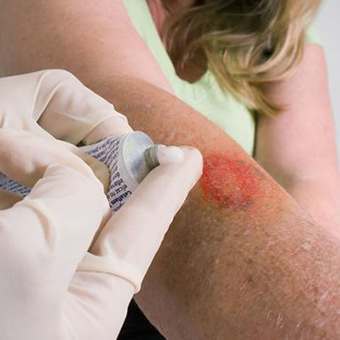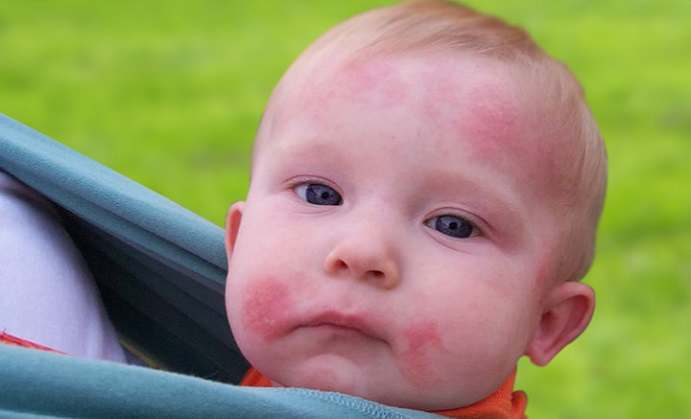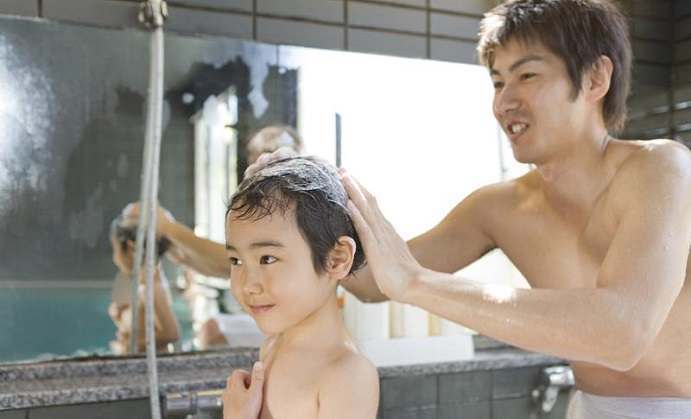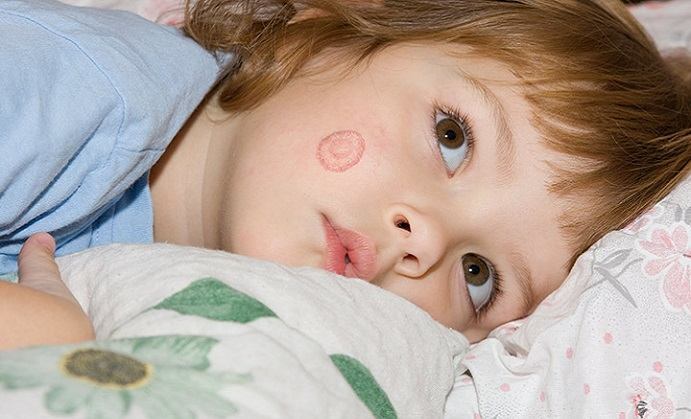Introduction
Ringworm is one of the contagious skin diseases common in kids and babies. Some people believe that worms cause ringworm, but this is a major misconception about the condition. The term ringworm refers to a fungal infection known as tinea corporis. This infection causes ring-shaped spots on your skin. Therefore, ringworm acquired its name from these round patches, which may resemble round worms underneath the surface of the skin.
The fungi that cause ringworm infection are known as dermatophytes. The term tinea refers to the infections caused by dermatophytes. Tinea infections take different forms including body ringworm, athlete’s foot, tinea pedis, jock itch or tinea capitis, and scalp ringworm. Tinea capitis and tinea corporis are common in kids and babies. However, children can acquire any of the different types of the disease.
Causes of Ringworm
 Babies can acquire ringworm infections through direct contact with infected persons. Direct contact involves skin or hand contact with infected people. Hand contact may cause the infection if the infected person scratches the rash and touches the baby. In addition, the parasitic fungi that cause ringworm infection can spread through unclean clothes, beddings, towels, and other personal items. Kittens, puppies, and other domestic pets are also carriers of ringworm and can transfer it to humans.
Babies can acquire ringworm infections through direct contact with infected persons. Direct contact involves skin or hand contact with infected people. Hand contact may cause the infection if the infected person scratches the rash and touches the baby. In addition, the parasitic fungi that cause ringworm infection can spread through unclean clothes, beddings, towels, and other personal items. Kittens, puppies, and other domestic pets are also carriers of ringworm and can transfer it to humans.
Symptoms of Ringworm
Babies suffering from ringworm usually exhibit slightly red, circular, and elevated lesions on the trunk, face, arms, and legs. The lesions normally have an edge with tiny scales, bumps, or sores. The skin left between or in the middle of lesions generally appears healthy. Lesions usually manifest in different sizes, which vary crosswise in terms of inches. Lesions that grow close may merge with each other forming a multilobed shape. Ringworm causes an itchy sensation on the affected area. Other symptoms include scaling, redness, and a burning feeling on the affected part. Hair loss is a significant symptom in case of scalp ringworm.
Ringworm Treatment
 Based on the available information from online sources, the antifungal cream clotrimazole is one of the treatments that can be purchased from conventional retailers. Clotrimazole is also known as Mycelex or Lotrimin. Apply the cream to the infected parts and the adjacent skin two times in a day. In most cases, babies require a minimum of two weeks for the treatment to be effective. Although it is possible to treat most ringworm infections with ordinary retail drugs, it is vital to look for the help of a pediatrician to know the most appropriate treatment for a child. In some cases, the rash may not improve as expected. If it does not disappear within two weeks since the start of treatment, a pediatrician can prescribe a different treatment course of 3 to 4 weeks. This treatment may include oral antifungal drugs such as terbinafine and griseofulvin.
Based on the available information from online sources, the antifungal cream clotrimazole is one of the treatments that can be purchased from conventional retailers. Clotrimazole is also known as Mycelex or Lotrimin. Apply the cream to the infected parts and the adjacent skin two times in a day. In most cases, babies require a minimum of two weeks for the treatment to be effective. Although it is possible to treat most ringworm infections with ordinary retail drugs, it is vital to look for the help of a pediatrician to know the most appropriate treatment for a child. In some cases, the rash may not improve as expected. If it does not disappear within two weeks since the start of treatment, a pediatrician can prescribe a different treatment course of 3 to 4 weeks. This treatment may include oral antifungal drugs such as terbinafine and griseofulvin.
Ringworm Prevention
Proper washing of hands is an easy and effective way of preventing ringworm from spreading. Those taking care of children including caregivers and parents should clean their hands whenever they interact with infected kids. It is also advisable to clean the hands of infected children on a regular basis. Moreover, discourage children from scratching infected lesions. Baby mittens can discourage babies from scratching the skin. All personal items including clothes, caps, towels, and blankets should be thrown away or cleaned with hot water. Infected babies are safe after forty-eight hours since the start of treatment.
Do you want to find an effective Ringworm treatment? Check out our top rated Ringworm products











